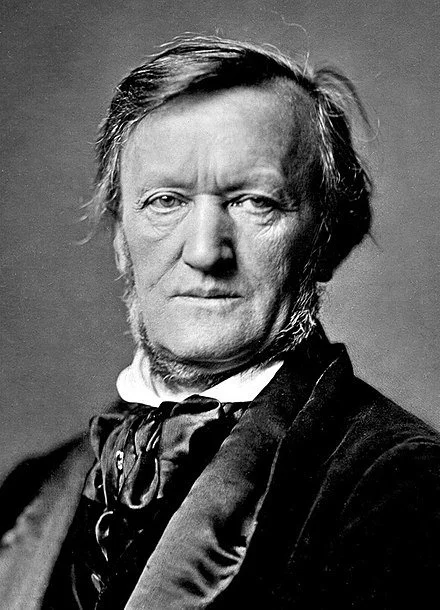TOM PAINE - THETFORD'S WORLD HERO
Thetford has a lot to be proud of but only Thomas Paine gives our Norfolk neighbour world-class status. A gilded bronze statue of the fiery 18th century radical stands proud in the town. There he is bewigged, holding a quill and for a man who turned the world upside down, a copy of his most famous work, ‘The Rights of Man’ - suitably the wrong way up. Never were the words that ‘the pen is mightier than the sword’ more aptly coined than for this astonishing former corset maker. ‘One man, two revolutions’, Paine said of himself. He was the driving force behind America’s independence from Britain (he even first uttered the words ‘United States of America’). Hounded out of England as an anti-royalist trouble brewer, he found himself in France bang in time for their own revolution. Immediately proclaimed deputy for Calais, he was the only voice in the French parliament to call on clemency for the type of person he had always reviled: a crowned monarch, in this case the soon-to-be decapitated Louis XVI. Later Tom was to lose his own head, but only way after his death. Oh and throw in that Paine was among the earliest writers to call for the abolition of slavery (in 1775).
I have a confession to make before going on to further lionise this forgotten hero of Norfolk. He is a hero of mine. In 2009 I was asked to write a play about the life of Thomas Paine as part of a 200th anniversary (of his death) being commemorated in his birthplace of Thetford. I dipped into John Keane’s masterly biography of Paine and found it impossible to put down. I was drawn into Tom’s world of Thetford Quakerism, Lewes radicalism, and later, American revolt. For a playwright, there was almost too much incident in Paine’s long life (he died aged 72 in New York). Where to start? Humble beginnings and school in Thetford Grammar? (his classroom is still there). Paine the pirate? Paine the rabble rouser? Paine the American revolutionary who stood alongside George Washington and set the rebels alight with his savagely anti-monarchist pamphlet ‘Common Sense’? Paine at the Bastille sentenced to the guillotine? Paine as author of the bestselling book of the 18th century: ‘The Rights of Man’ or Paine the visionary – his call for a universal old-age pension and land rights for African slaves in America. This is only a fraction of his incident-packed life driven on by his insatiable desire for liberty and justice and a pen mightier than a missile.
If you want a flavour of Paine’s forensic style, dry wit and forceful argument, I would suggest an online copy of ‘African Slavery in America’. It was an article published in Philadelphia in March 1775, just a few weeks after Tom arrived on American shores with a letter of introduction from his friend Benjamin Franklin. Within days of arrival, Paine was offered the editorship of a fairly conservative magazine in Philadelphia (then the capital of the American colonies). The publisher warned Paine not to print anything that might stir up trouble with the British masters. Some hope. Paine used his newly-found voice to subtly demolish the case for continued colonisation. Later works were far from subtle – describing George III as a member of the ‘crowned ruffians of Europe’. Paine’s attack on American slavery will knock you back in your seat even though it was written nearly 250 years ago. He writes,
‘Our Traders in MEN (an unnatural commodity!) must know the wickedness of that SLAVE-TRADE, if they attend to reasoning, or the dictates of their own hearts’.
That word ‘reasoning’ is a Paine trademark. He was above all a product of the Age of Reason (the title of another of his works, a savage demolition of organised religion). As for his fellow Englishmen involved in slavery, he takes no prisoners. He describes those innocents captured in Africa thus;
‘they are industrious farmers, enjoy plenty, and lived quietly, averse to war, before the Europeans debauched them with liquors, and bribing them against one another; and that these inoffensive people are brought into slavery, by stealing them, tempting Kings to sell subjects, which they can have no right to do, and hiring one tribe to war against another, in order to catch prisoners. By such wicked and inhuman ways the English are said to enslave towards one hundred thousand yearly; of which thirty thousand are supposed to die by barbarous treatment in the first year.’
This was very strong stuff in 1775. Paine went on to logically tear apart those who used the bible and religion to justify enslavement. He also has a ‘backstop’ solution if religious folk couldn’t see the error of their ways: to urge Africans to enslave Europeans to see how they like it. In Paine’s own words:
‘Is the barbarous enslaving our inoffensive neighbours, and treating them like wild beasts subdued by force, reconcilable with all these Divine precepts? Is this doing to them as we would desire they should do to us? If they could carry off and enslave some thousands of us, would we think it just?—One would almost wish they could for once; it might convince more than Reason, or the Bible.’
Bulldozing every other argument justifying the evil practice of slavery, Paine ends his piece by attending to what should happen to freed slaves. Here he is way, way, way ahead of his time. Take this in:
‘Perhaps some could give them lands upon reasonable rent, some, employing them in their labour still, might give them some reasonable allowances for it; so as all may have some property, and fruits of their labours at their own disposal, and be encouraged to industry; the family may live together, and enjoy the natural satisfaction of exercising relative affections and duties, with civil protection, and other advantages, like fellow men.’
This said Paine is what freeing slaves should look like. It was all too much for Paine’s fellow founding fathers – mostly slave owners themselves, preferring as Tom wrote, gold to liberty. Disillusioned with post-independence America, and infuriating citizens by calling Washington, a new King George, Paine left for England (where he was charged with seditious libel against the king), fled to France where Robespierre had him arrested and sentenced to death. He escaped the chopper by an amazing stroke of luck – the prisons were emptied hours before the time of his execution. Sometimes being in a chaotic uprising can save the day. Paine returned to the USA as an old man though his passion for liberty and justice were undimmed – even after an enemy took a pot shot at him. He died a lonely death in 1809, already a forgotten figure. A handful of mourners came to the cemetery – one, a freed African slave had walked over a hundred miles to pay his respects. Years after his death, the English writer William Cobbett came to dig up Paine’s bones and take them to Westminster Abbey to be buried as an international hero. Sadly Cobbett somehow lost most of the skeleton, leaving only Tom’s skull in his possession. It is fitting that the body of Tom Paine could be anywhere or in many places. It is doubly so as Paine described himself in words echoed on that wonderful statue in Thetford: ‘World Citizen’.
For more on Thomas Paine, read ‘Tom Paine, A Political Life’ by John Keane, published by Bloomsbury.







